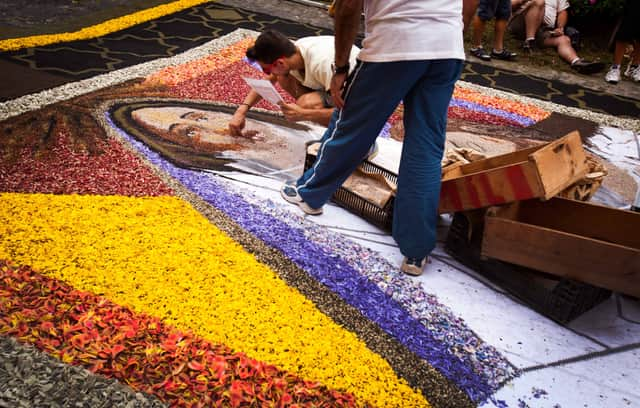When is The Feast of Corpus Christi 2023? Date, traditions and history explained
and live on Freeview channel 276
The Feast of Corpus Christi is a Christian festival celebrating the real presence of the body of Jesus Christ in the Eucharist - the sacrament commemorating the Last Supper.
This feast is observed by Latin Churches as well as Western Orthodox Churches such as the Lutheran and Anglican Churches.
Advertisement
Hide AdAdvertisement
Hide AdThe Feast of Corpus Christi falls on the Thursday after Trinity Sunday and was first proposed by St Thomas Aquinas to create a feast solely focused on the Eucharist. Also known as the Solemnity of the Most Holy Body and Blood of Christ, this feast is also a public holiday in countries around the world.
So what is the history behind the Feast of Corpus Christi, when is it and how is it celebrated? Here’s what you need to know.
When is the Feast of Corpus Christi 2023?
This Christian celebration always takes place on the Thursday after Trinity Sunday, which falls 60 days after Easter or the Sunday immediately after. This year, the Feast of Corpus Christi takes place on Thursday 8 June 2023.
Since Easter is a movable feast, the following celebrations such as Pentecost, Ascension Day and Trinity Sunday move with it. Therefore, Corpus Christi also follows this rule and can change according to the Christian calendar. For this reason, the feast will fall earlier next year, on 30 May 2024.
Advertisement
Hide AdAdvertisement
Hide AdThe earliest possible date for this Feast is 21 May, and the latest is 24 June for those Churches which follow the Gregorian calendar. For those following the Julian Calendar, often known as following Eastern Christianity, it falls on 3 June at the earliest and 7 July at the latest.


The history of the Feast of Corpus Christi
The feast, although now a vital part of the Christian calendar, was initially created after around 40 years of work from Juliana of Liege, a 13th century canoness (a religious woman living a simple life). Juliana wanted to create a feast outside of Lent in honour of the Blessed Sacrament and had a vision of Christ where she was instructed to plead for the institution of Corpus Christi.
For 20 years she kept that vision a secret, and it was in 1246 when Bishop Robert ordered the celebration to take place on the Thursday after Trinity Sunday every year. This was done during a time when bishops could order feasts in their dioceses (their district).
When Jacques Pantaléon of Troyes came to visit the district, he was won over to the cause of the Feast, and when he became pope in 1264, as Pope Urban IV, he instituted the feast for the entire Latin Church. However, it only became a widespread celebration in 1317, after being promoted by Pope John XXII - his successor.
How is the Feast of Corpus Christi celebrated?
Advertisement
Hide AdAdvertisement
Hide AdThe Feast is celebrated around the world, and in many countries is a holy day of obligation to participate in Mass. This is one of five events where a Bishop is not allowed to be away from their diocese unless for an emergency. During this celebration, many communities hold a procession with prayers and singing to honour the Blessed Sacrament in the Catholic Church.
However, in the Church of England, the celebration of Corpus Christi was abolished in 1548 but the day is marked as a day of Thanksgiving. However, in England before the abolishment, people would perform mystery plays.
In combination with folk traditions, around the world, people create flower wreaths for prayers and protection for the upcoming harvest. Prayers and church services take place across countries such as Austria, Brazil, Haiti, Mexico and Peru.
Comment Guidelines
National World encourages reader discussion on our stories. User feedback, insights and back-and-forth exchanges add a rich layer of context to reporting. Please review our Community Guidelines before commenting.
